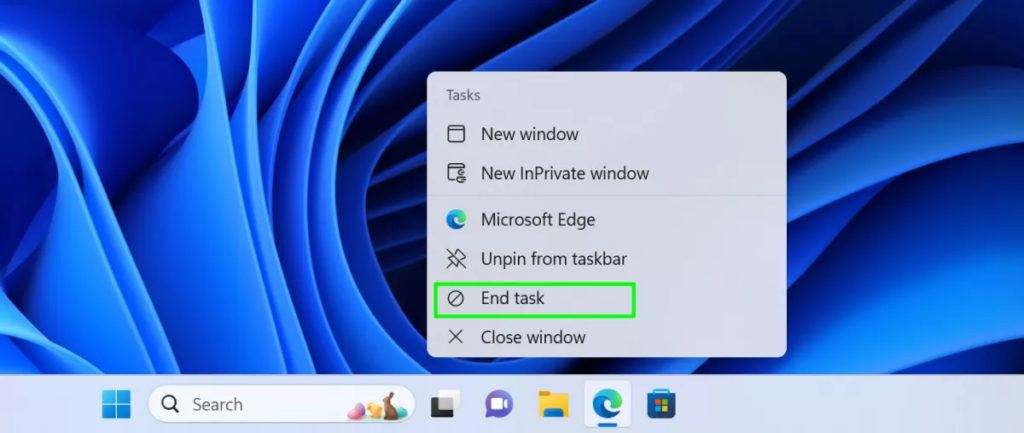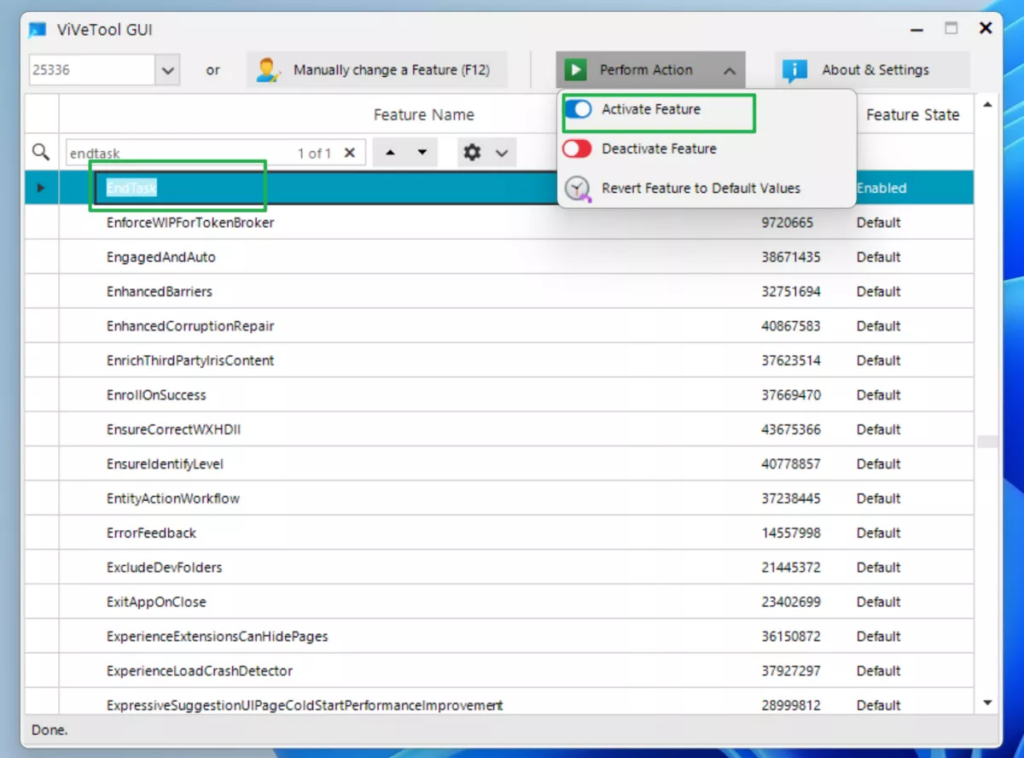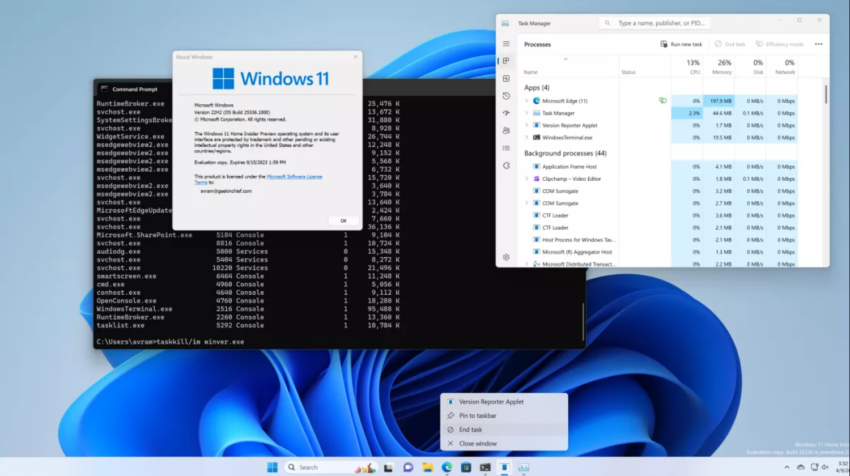It is a common occurrence for Windows users, and it is extremely frustrating. You are utilizing a program when it abruptly ceases, possibly with a white translucent layer covering its window or the entire display. If selecting the X in the window or using the keyboard shortcut Alt + F4 to terminate the misbehaving application does not work, you have only one option: end task or kill task.
We have a comprehensive tutorial on how to force terminate Windows applications or even the entire operating system. Currently, each approach requires opening a distinct menu or application, such as the Task Manager or command prompt. Now, Microsoft is developing a “End Task” option that will appear when you right-click on an application’s icon in the taskbar, allowing you to force-quit it directly from the context menu.
Windows 11 Canary 25336 has a Terminate Task option.

Before you pop the champagne cork, consider that the “End Task” option is currently only available as a preview in some early Windows Insider builds, and as far as I can tell from evaluating these builds, it does not yet function.
In the most recent Dev channel version of Windows 11, Build 23430, you can enable “End Task” by navigating to Settings->Privacy & Security->For developers. There, you can enable it, but it doesn’t make the “End Task” option appear when you right-click on taskbar icons, and I discovered that the option’s “on” status didn’t even persist when I closed and reopened the Settings menu.
Windows 11 Dev Build 23430 includes a Terminate Task option.

When utilizing Windows 11 Canary Build 25336, the most recent build in the Canary (unstable) channel, the Terminate Task option was neither accessible in settings nor enabled by default. Using the ViveTool GUI app, a utility that enables concealed Windows features that are disabled by default, I was able to enable EndTask and it appeared in the right-click context menu.
ViveTool GUI

However, when I actually selected the End Task option for any of the apps I tested, including Edge, Winver, and Notepad, nothing occurred. However, we can infer that the behavior would be identical to that of the Task manager’s End Task button.
End Task

It is intriguing that, based on its positioning in the developer settings menu, Microsoft appears to perceive the End Task option as one that should be disabled by default and used primarily by programmers. Undoubtedly, developers would profit from the ability to force exit apps they are working on, as testing apps and observing them freeze is a significant part of debugging.
In reality, however, any application may stall and require termination. Microsoft presumably doesn’t want to promote force quitting because if you force quit an application that isn’t halted, you risk losing data or corrupting files. In any case, once the End Task feature is fully functional and available in a stable version, I will enable it and recommend that you do the same. Simply avoid using it unless your application cannot be terminated by conventional means.

